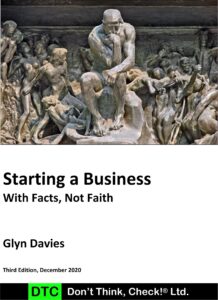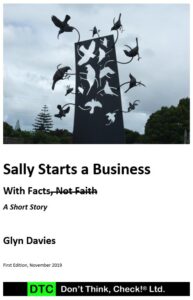
Introduction
Based on the work of Andrew Ehrenberg, the most growth for a brand typically comes from light buyers and current non-buyers. The most effective advertising works on the availability[1] of a brand by reaching both heavy (frequent) and light (infrequent) buyers by refreshing their memories and reaching non-buyers by building new memories. For Facebook to be a viable platform for growth, it has to be able to reach the later, but does it?
As a refresher from Does Customer Loyalty Exist?, your business’s largest market is likely to be the infrequent customers and those people who are not customers yet. Yes, brand fans are important, but their frequent purchasing multiplied by their small population is dwarfed by the infrequent (and non-) purchasers multiplied by their much larger population. Furthermore, it is entirely likely that brand fans have purchased all they can, so over-devoting marketing budgets on these people is likely to be largely wasted.
The paper What’s Not to “Like?” Can a Facebook Fan Base Give a Brand The Advertising Reach It Needs? (Nelson-Field, Riebe, & Sharp, 2012), found however that a brand’s Facebook fan base had a high incidence of “heavy buyers (57 percent), and virtually no non-buyers (1 percent).” Which is not what a brand needs to reach light buyers (approximately 9 percent) and non-buyers.
This result suggests that Facebook is effective for brand support (for example questions and answers, discussions, offers), as well as perhaps brand advocacy by fans, but less effective for brand promotion by the brand alone.
The finding must also concern brands that have few repeat purchases and limited ongoing participation, such as with roof painters and dentists, compared to say a gym membership where there is likely to be high repeated engagement along with repeat purchases as well as purchases of merchandise.
The major takeaway is that marketers need to know what media its customers and potential customers use, and what they use it for. It should not come as a surprise that Facebook, as a form of “earned”[2] media may have its place, but with its limited reach to light and non-buyers, that it is not the panacea that some appear to assume it is.
[1] Where availability means – Mental availability – the number of associations a buyer has about the brand, the strength of those associations, and the relevance of the associations to the buying context. Physical availability – making the brand as easy to find and buy as possible. (Sharp, 2014) (Sharp, 2014).
[2] Media activity related to a company or brand that is not directly generated by the company or its agents but rather by other entities such as customers or journalists. Wikipedia, 2020.
References
Nelson-Field, K., Riebe, E., & Sharp, B. (2012, June). What’s Not to “Like?” Can a Facebook Fan Base Give a Brand The Advertising Reach It Needs? Journal Of Advertising Research, 262-269.
Sharp, B. (2014). How Brands Grow: What Marketers Don’t Know. Oxford University Press.



